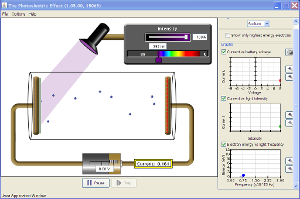I love to listen Garrison Keillor. He is an amazing storyteller that can make things that are ordinary come to life. Above, try listening to the first minute of his story about ice fishing.
Your job today is to research three stories from all sorts of telescope data and reinterpret them through a story. There are lots of stories in this website, but you need to be able to work with me to interpret three of them so they are interesting to a non-scientist. This may be through a children's story, a flip video narrative, or a musical story.
http://amazing-space.stsci.edu/resources/explorations/groundup/
Era stories:
Story 1
Galileo's Refractor: Galileo's telescope revealed the first hint of the depths of space. His dedication and approach to explaining what he saw revolutionized astronomy. (Includes one telescope story, one biography.)
Early Refractors: Telescopes with flatter lenses brought wider and clearer views of the sky but required longer tubes. Some refractors were so long that they became difficult to maneuver. (Includes two telescope stories.)
Great Refractors: New technology allowed astronomers to create larger lenses that produced bright, clear images. For a while, refracting telescopes became more popular than reflecting telescopes. (Includes three telescope stories, one biography.)
Story 2
Newton's Telescope: Sir Isaac Newton replaced the main lens of a telescope with a mirror, creating the reflecting telescope. (Includes one telescope story.)
Early Reflectors: Early reflecting telescopes used metal mirrors to look deep into space, but the new design presented new challenges. (Includes four telescope stories, one biography.)
Hugh Reflectors: Astronomers crafted telescope mirrors from glass instead of metal, making reflecting telescopes more powerful and easier to use. They began relying on photography and instruments to record observations. (Includes three telescope stories, two biographies.)
Story 3
Solar Telescopes: Solar telescopes are reflecting telescopes that use special instruments to observe the Sun. (Includes one telescope story, one biography.)
Radio Telescopes: The discovery of radio waves from space launched a new branch of study: radio astronomy. This spurred astronomers to develop new techniques to accommodate the large size of radio waves. (Includes two telescope stories.)
Multi-mirror Telescopes: Multi-mirror telescopes used computer technology to overcome the size limits of huge reflecting telescopes. (Includes two telescope stories, one biography.)
Space Telescopes: By placing telescopes in orbit above Earth, astronomers were finally free to view the universe in all wavelengths of light. (Includes five telescope stories, two biographies.)
Send me a text at 5636081900 at the end of the hour so you can share your progress.

